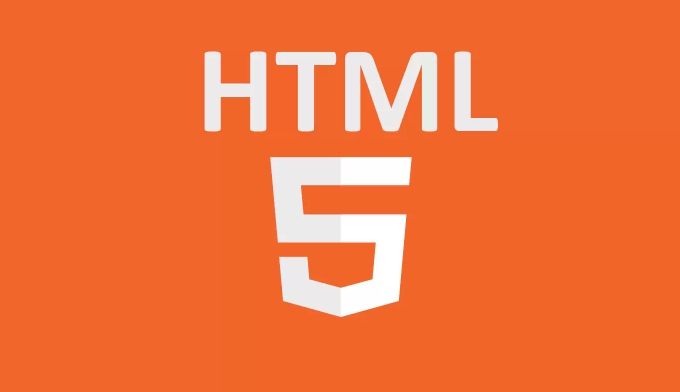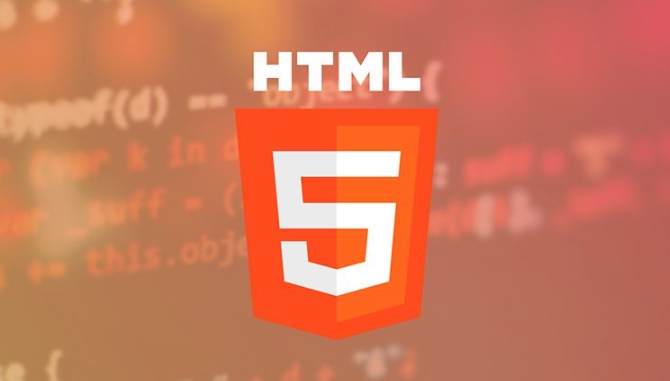What are the key differences between HTML4 and HTML5?
Jul 03, 2025 am 02:11 AMHTML5 has significantly improved semantic tags, multimedia support, form functionality and local storage compared to HTML4. 1. HTML5 introduces more semantic tags such as

The difference between HTML4 and HTML5 is actually quite obvious, especially in terms of function extension, tag semantics and support for modern web page requirements. HTML5 has been optimized and enhanced in many aspects, making development more efficient and more suitable for the current Web development.

1. Clearer semantic tags
HTML4 uses mostly common tags, such as <div> and <code><span></span> to divide page structure, while HTML5 introduces more descriptive tags, such as: 
-
<header></header>means the header of the page -
<nav></nav>means navigation bar -
<article></article>means independent content block -
<section></section>means content block -
<footer></footer>means bottom information
These tags not only make the code easier to understand, but also help aid tools such as SEO and screen readers to better parse page structure.
2. Natively support multimedia elements
In HTML4, embedding audio or video often requires relying on third-party plugins (such as Flash), and HTML5 provides native support:

-
<audio></audio>tags can be inserted directly into audio files -
<video></video>tag can play videos, and it also supports control bars, automatic playback and other functions.
The advantage of this is that there is no need to introduce additional plugins, which improves compatibility and loading speed, especially on mobile devices.
3. Form input type and verification enhancement
HTML5 supports forms more powerfully, and has added many new input types, such as:
-
<input type="email">Email format verification -
<input type="date">Date selector -
<input type="number">Number input box -
<input type="search">Search box style optimization
At the same time, HTML5 also provides a simple client verification mechanism, such as required attribute, which allows the browser to check whether the content has been filled in before submitting, reducing JavaScript dependency.
4. Offline applications and local storage support
HTML5 introduces Application Cache and local storage mechanisms (localStorage and sessionStorage), so that web pages can continue to run without a network connection, and data can be retained after the user closes the page. This is very useful when developing web applications, such as making some offline notes, caching resources, etc.
In contrast, HTML4 has almost no ability in this area and can only rely on cookies to store a small amount of data, and it will be carried with you every time you request it, which is not very efficient.
Basically these key differences. HTML5 not only simplifies the development process, but also improves user experience and performance, which is the main reason why it gradually replaces HTML4.
The above is the detailed content of What are the key differences between HTML4 and HTML5?. For more information, please follow other related articles on the PHP Chinese website!

Hot AI Tools

Undress AI Tool
Undress images for free

Undresser.AI Undress
AI-powered app for creating realistic nude photos

AI Clothes Remover
Online AI tool for removing clothes from photos.

Clothoff.io
AI clothes remover

Video Face Swap
Swap faces in any video effortlessly with our completely free AI face swap tool!

Hot Article

Hot Tools

Notepad++7.3.1
Easy-to-use and free code editor

SublimeText3 Chinese version
Chinese version, very easy to use

Zend Studio 13.0.1
Powerful PHP integrated development environment

Dreamweaver CS6
Visual web development tools

SublimeText3 Mac version
God-level code editing software (SublimeText3)

Hot Topics
 What Does H5 Refer To? Exploring the Context
Apr 12, 2025 am 12:03 AM
What Does H5 Refer To? Exploring the Context
Apr 12, 2025 am 12:03 AM
H5referstoHTML5,apivotaltechnologyinwebdevelopment.1)HTML5introducesnewelementsandAPIsforrich,dynamicwebapplications.2)Itsupportsmultimediawithoutplugins,enhancinguserexperienceacrossdevices.3)SemanticelementsimprovecontentstructureandSEO.4)H5'srespo
 Is H5 a Shorthand for HTML5? Exploring the Details
Apr 14, 2025 am 12:05 AM
Is H5 a Shorthand for HTML5? Exploring the Details
Apr 14, 2025 am 12:05 AM
H5 is not just the abbreviation of HTML5, it represents a wider modern web development technology ecosystem: 1. H5 includes HTML5, CSS3, JavaScript and related APIs and technologies; 2. It provides a richer, interactive and smooth user experience, and can run seamlessly on multiple devices; 3. Using the H5 technology stack, you can create responsive web pages and complex interactive functions.
 H5 and HTML5: Commonly Used Terms in Web Development
Apr 13, 2025 am 12:01 AM
H5 and HTML5: Commonly Used Terms in Web Development
Apr 13, 2025 am 12:01 AM
H5 and HTML5 refer to the same thing, namely HTML5. HTML5 is the fifth version of HTML, bringing new features such as semantic tags, multimedia support, canvas and graphics, offline storage and local storage, improving the expressiveness and interactivity of web pages.
 Understanding H5 Code: The Fundamentals of HTML5
Apr 17, 2025 am 12:08 AM
Understanding H5 Code: The Fundamentals of HTML5
Apr 17, 2025 am 12:08 AM
HTML5 is a key technology for building modern web pages, providing many new elements and features. 1. HTML5 introduces semantic elements such as, , etc., which enhances web page structure and SEO. 2. Support multimedia elements and embed media without plug-ins. 3. Forms enhance new input types and verification properties, simplifying the verification process. 4. Offer offline and local storage functions to improve web page performance and user experience.
 HTML5: The Standard and its Impact on Web Development
Apr 27, 2025 am 12:12 AM
HTML5: The Standard and its Impact on Web Development
Apr 27, 2025 am 12:12 AM
The core features of HTML5 include semantic tags, multimedia support, offline storage and local storage, and form enhancement. 1. Semantic tags such as, etc. to improve code readability and SEO effect. 2. Simplify multimedia embedding with labels. 3. Offline storage and local storage such as ApplicationCache and LocalStorage support network-free operation and data storage. 4. Form enhancement introduces new input types and verification properties to simplify processing and verification.
 HTML5 and H5: Understanding the Common Usage
Apr 22, 2025 am 12:01 AM
HTML5 and H5: Understanding the Common Usage
Apr 22, 2025 am 12:01 AM
There is no difference between HTML5 and H5, which is the abbreviation of HTML5. 1.HTML5 is the fifth version of HTML, which enhances the multimedia and interactive functions of web pages. 2.H5 is often used to refer to HTML5-based mobile web pages or applications, and is suitable for various mobile devices.
 HTML5: The Building Blocks of the Modern Web (H5)
Apr 21, 2025 am 12:05 AM
HTML5: The Building Blocks of the Modern Web (H5)
Apr 21, 2025 am 12:05 AM
HTML5 is the latest version of the Hypertext Markup Language, standardized by W3C. HTML5 introduces new semantic tags, multimedia support and form enhancements, improving web structure, user experience and SEO effects. HTML5 introduces new semantic tags, such as, ,, etc., to make the web page structure clearer and the SEO effect better. HTML5 supports multimedia elements and no third-party plug-ins are required, improving user experience and loading speed. HTML5 enhances form functions and introduces new input types such as, etc., which improves user experience and form verification efficiency.
 The Legacy of HTML5: Understanding H5 in the Present
Apr 10, 2025 am 09:28 AM
The Legacy of HTML5: Understanding H5 in the Present
Apr 10, 2025 am 09:28 AM
HTML5hassignificantlytransformedwebdevelopmentbyintroducingsemanticelements,enhancingmultimediasupport,andimprovingperformance.1)ItmadewebsitesmoreaccessibleandSEO-friendlywithsemanticelementslike,,and.2)HTML5introducednativeandtags,eliminatingthenee






